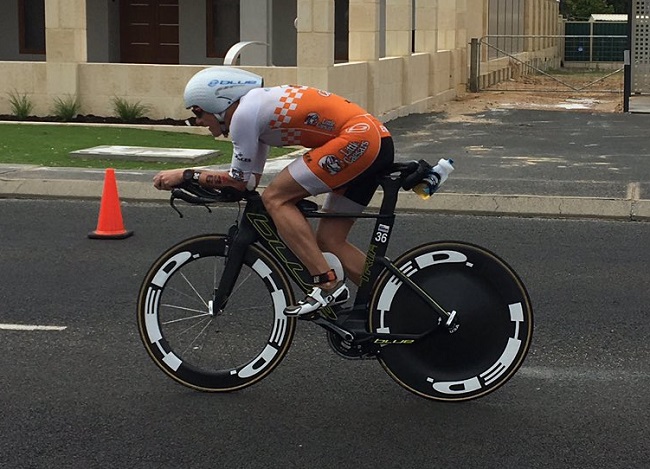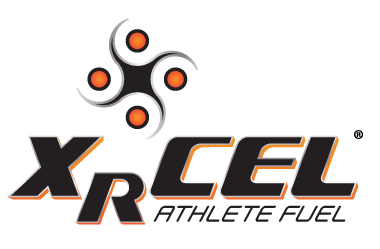
14 Feb Avoid GI Issues and the dreaded Energy Bonk on Race Day
By Patrick Evoe
I want to ask you a simple question: why don’t you dedicate as much time and energy into perfecting and dialing in your training and race nutrition as you do for your workouts or training plan? I would argue that having a fine tuned nutrition plan is just as important as your race day fitness. It’s also equally important as the time and money you put into having excellent equipment. You need to have confidence on race day that your body will be running its best. I’ve been around triathlon for a long time and I’ve heard loads of athletes give reasons (read: excuses) for why they didn’t perform up to their racing potential. At the top, or near the top of the list is nutrition or gastrointestinal (GI) issues. Only a couple other issues will ruin a race as fast as nutrition problems. Going too hard only to blow up because of muscle fatigue, as well as catastrophic mechanical failure (including flat tires) are the other two top race ruining events. Of course if you show up to a race with an underlying injury, you’re set up for failure even before you double-knot your shoe laces.
Mechanical failure or a flat tire can be just dumb luck or the result of improperly maintained equipment. So that scenario is partially out of your control. Physically blowing up in a race results from improper pacing and an undisciplined race execution. Because of this, I’d argue that blowing up is also in your control. Race nutrition is also in your control if you take the time to devise, test, and then fine tune a race and training nutrition plan. Too many athletes do not take their race and training nutrition as seriously as they should. I think this could be because either they’re too lazy or they don’t understand its importance to their overall race performance. Think about how much time and energy you or your friends dedicate to your training and equipment. If you spent just a fraction of that time perfecting your nutritional plan, you could greatly reduce your chances of having GI issues or a dreaded energy bonk on race day.
I want to discuss what I’ve seen as the two biggest nutritional self-sabotaging mistakes athletes inflict on themselves. The first is the dreaded calorie “bonk.” This is athlete slang for simply running out of energy. This happens when your muscles demand more calories than you have available to use. Without going into the dirty details of your physiological processes, your body takes readily available calories (from what you eat), stored fat (depending on how hard you’re working), and glycogen in your muscles and liver (think your body’s fuel tank that’s filled from the food you eat in the hours and days before you work out), then converts those energy sources into a compound called ATP which is the only fuel your muscles use. I’ve over simplified it here, but if you keep this in mind, you can quickly see that if you’re working hard and don’t have enough calories in your system, at some point your gas tank will be empty and there won’t be any ATP to fuel your body.
When that happens, your body is very smart and knows that it has to protect itself and will shut down before it runs out of fuel for your critical functions (think brain, heart, lungs). When this occurs during exercise, you start to simply feel systemically terrible, maybe dizzy, maybe nauseous, and you just won’t be able to push anymore. You have now officially “bonked.” If you think about it in these terms, it sounds simple to avoid. If you continue to take in calories as you train, especially as the duration of the activity increases, you help to ensure your body always has calories in the fuel tank from which it can draw.
This isn’t as simple as eating and drinking a Thanksgiving’s feast on your swim, bike, or run. That can lead to the next issue I want to discuss. However, spending the time and effort to fine tune exactly how much and the right type of nutritional fuel you can ingest while you train can help you keep your body fueled and running strong on race day.
The flip side of the exercise nutritional equation is taking in too much or the wrong types of fuel while training or racing. This leads to GI issues, including nausea, sloshing stomach, upset stomach, bloating, and/or diarrhea. None of us like to try to deal with those issues while working out. If you take in too many calories per hour versus the intensity level of your activity, you can end up with any of the symptoms on this list. If you take in products with too much or the wrong types of sugar (I’ll explain this in a minute) your GI tract will suffer. You can end up in this same place if the calories are too concentrated in your gut versus the amount of fluid it’s taken with. Even ingesting solid versus liquid forms of fuel, or taking nutritional sources with varying amounts of protein or fat will change your personal nutritional equation and thus how your body reacts. If you aren’t confident that your nutrition plan is tried and true, then you’re leaving your GI tract up to chance on all of these variables.
I mentioned the types of sugar your body uses as fuel. It’s important to understand that not all fuel sources are created equally. Luckily for us, our bodies are very smart and adaptable. As omnivores, our bodies are great at digesting and converting a wide variety of plant and animal caloric sources into usable fuel for our bodies. For exercising, on the other hand, while we CAN use different fuel sources, we perform better using the types of fuels that our bodies most easily and efficiently convert into our muscles’ usable energy. Think about a hot flame. Many items you find will burn in that flame, but some will burn quickly, efficiently, and clean (think alcohols or natural gas), while others give off soot and dirty byproducts (think burning a tire). For sports nutrition, glucose is the most readily available caloric source for your body to convert into usable fuel (remember the ATP we talked about earlier). XRCEL Athlete Fuel uses glucose-loaded micro-gels in its suspension, formulated to release that glucose in your intestines while you exercise. Your intestines are the place where your body can absorb those calories. If you’re fueling with other forms of sugar, carbohydrates, protein, or fat while you’re training, you’re not using that clean, fast, efficient fuel your body wants. You’re burning the tire rubber instead of the Formula 1 race car fuel. This is why XRCEL is a superior exercise nutrition product. It is designed specifically to be the best at giving your body what it needs.
As you start to work on your nutrition in training, its critical that you try to test your nutrition under different scenarios. Testing a nutritional plan a couple times in training and then assuming it will be perfect on race day is one of the biggest errors I’ve seen athletes make. First, the intensity you train at is not always the same as your race intensity. As you stress your muscles and cardiovascular system more, it changes how your digestive system works. If you go out for a long easy ride while chatting with friends, I can guarantee that your GI is working very differently than it will on race day, unless of course, your race day pace is the same as your long, easy, chatting pace. Also, think about how much time you spend stopped during training sessions. Every time you stop at a red light, stop for the bathroom, stop to refill water bottles, stop to change a tire, or stop to tie a shoe. Every time you stop in training, your heart rate drops and it becomes easier for your body to digest the calories you’ve been ingesting. I know it’s very hard to have a perfect race simulation in training, and physiologically it’s not always good to do them, but you need to find ways to do workouts where you can stress your body like a race to see how it reacts to your nutrition plan. If you don’t, you’re rolling the dice on race day.
The second variable to consider for your nutrition plan is the environmental conditions. Hot versus cold, humid versus arid will change between your training and racing environments. This will not only affect your sweat rates, but also how your stomach reacts to different amounts of fuel. I know most of us cannot travel around the world to test our nutrition in different climates, but you need to find ways to keep testing your plan. This is one reason that testing your nutrition year-round is helpful. If you’re only testing on nice warm 80-degree summer days, what happens if your race day comes and a freak cold front blows in? How does your stomach react when you’re biking hard in temperatures in the 40s and 50s? Failing to test how your GI system changes for different environmental conditions is another area where I’ve seen athletes make major mistakes.
After reading this, I hope you understand why it’s important to focus on perfecting your nutritional plan. I also hope you have learned a few factors many athletes overlook while testing their plans in training. The key to all of this is to start with your initial plan, then test, test, test in training. Try different types of workouts and different environmental conditions throughout the year. Try taking in more calories, then when you think it’s too much, try backing off. You need to think of yourself as Goldilocks and find the nutritional plan that just right for YOU. I recommend XRCEL because it’s designed specifically with all of these factors in mind. It’s designed with the best type of fuel for your body as you exercise, so you don’t have to worry about using different nutrition products. You just need to figure out how much XRCEL to drink and balance that with your overall hydration plan. Don’t leave anything up to chance. This is one area where you have a lot of control in your training and racing. You can understand after reading this why I find it both perplexing and disappointing when athletes have their races ruined because they didn’t place as much importance on their nutrition as they did on their training and equipment.








No Comments